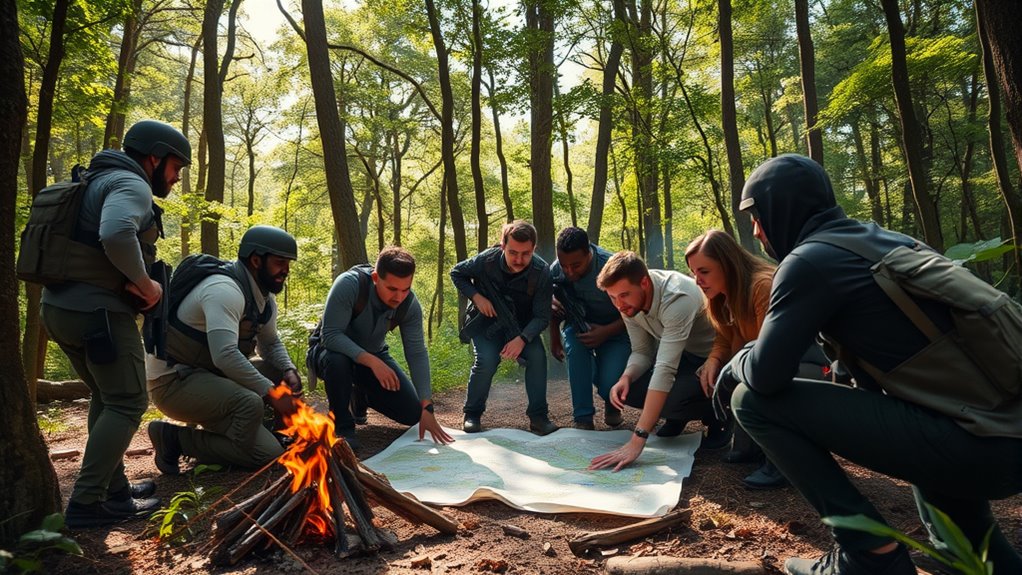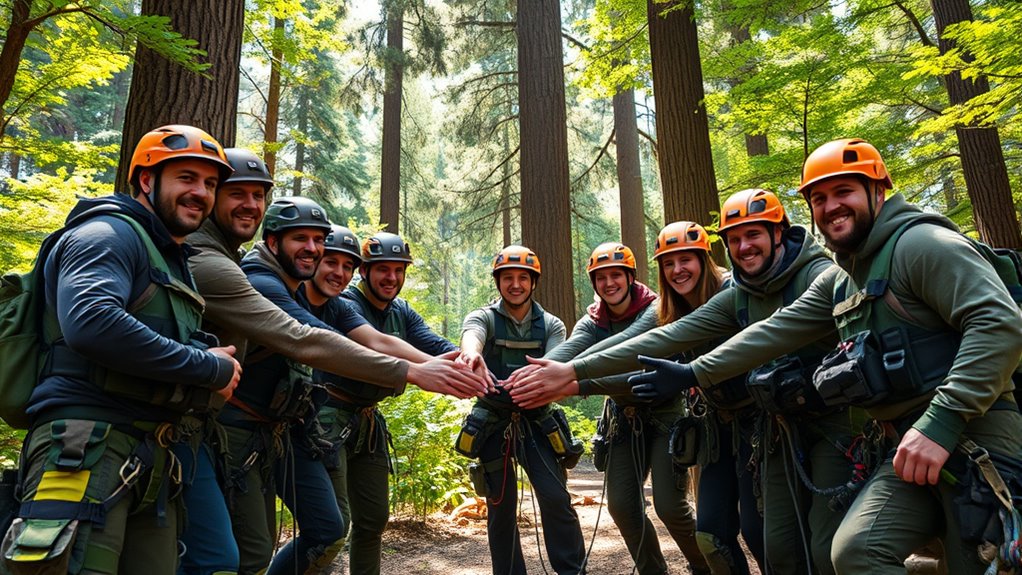Group survival training really boosts team cohesion by building trust and enhancing communication among team members. As you tackle challenges together, you’ll share experiences that create a stronger team identity. This training helps you connect on a personal level, which improves collaboration both in and out of the field. With effectively aligned objectives and open discussions, your team can reach new heights. Discover how these elements work together to elevate your team even further.
Key Takeaways
- Group survival training enhances navigation skills, which fosters teamwork and builds trust among team members.
- Shared challenges during training align team objectives, establishing a strong sense of identity and purpose.
- Effective communication improves within cohesive teams, leading to open discussions and constructive feedback.
- Strong personal bonds formed through team-building activities outside of work enhance collaboration during training sessions.
- Consistent effort and clear objectives are essential for overcoming challenges and improving team cohesion in diverse groups.

When you engage in group survival training, you’re not just learning how to navigate the wilderness; you’re also building essential bonds with your team. This training is more than just a set of skills; it’s an opportunity to enhance team cohesion, which greatly boosts your collective performance. As you face simulated challenges together, you forge deeper trust and understanding among team members, laying the groundwork for effective communication.
In this training environment, you and your teammates share experiences that help build a strong team identity. When you work together to overcome obstacles, you establish shared objectives that align your goals. This alignment fosters a sense of unity and purpose, which is critical for high-performing teams. The essence of teamwork thrives on cooperation, and activities like group challenges or team sports can further enhance these bonds.
Moreover, cohesive teams are known to communicate more effectively, which leads to better problem-solving. When you trust your teammates, you’re more likely to engage openly in discussions, share ideas, and provide constructive feedback. This dynamic creates a feedback loop, where high performance can enhance cohesion, and increased cohesion can lead to even higher performance levels.
However, building this cohesion isn’t always straightforward. It requires time, and the leadership style can play a crucial role in fostering an environment conducive to team bonding. Larger or more diverse groups may face unique challenges, such as communication barriers and cultural differences, which can hinder cohesion. But with clear objectives and established ground rules, you can navigate these challenges and promote a more harmonious team atmosphere.
Engaging in team-building activities outside of regular work can also strengthen personal bonds. Social interactions, whether through shared meals or charitable work, enhance the social cohesion needed for a successful team. These experiences allow you to see your teammates in a different light, fostering deeper connections that translate into improved collaboration during training and beyond.
Frequently Asked Questions
What Is the Duration of Group Survival Training Programs?
Group survival training programs vary in duration.
You can opt for a 2-day course, which covers basic wilderness skills, or choose a more intensive 3-day program that includes hands-on exercises and even an overnight stay.
If you’re looking for something more advanced, extended programs like a 50-day wilderness immersion offer in-depth training.
Many courses can be customized to fit your specific needs or experience levels, ensuring you get the most out of your training.
Are There Age Restrictions for Participants in These Training Sessions?
Absolutely, age restrictions can affect participation in survival training sessions.
Many programs set specific age limits, often requiring participants to be at least 10 or 12 years old.
However, some courses might flexibly accommodate younger individuals with parental permission.
If you’re considering joining a group, check the specific institution’s guidelines to verify you meet their requirements.
How Much Does Group Survival Training Typically Cost?
Group survival training typically costs between $45 to $850 per person, depending on the program’s duration and intensity.
For a short 4-hour class, you’ll pay around $45, while an extensive 5-day expedition can set you back $850.
Some extreme survival experiences, like a 24-hour course, are available for $99.
Keep in mind that many programs require a minimum of three participants for private bookings, so gather your friends!
Can Anyone Join a Group Survival Training Program?
Yes, anyone can join a group survival training program, but there are some requirements.
Most programs have age restrictions, so check if you meet the minimum age. If you’re a minor, you’ll need a parent or guardian’s permission.
You should also be in reasonably good physical health since the activities can be demanding.
Make sure you’re ready to commit fully, as quitting mid-program isn’t an option for safety reasons.
Where Can I Find Group Survival Training Near Me?
To find group survival training near you, start by searching local wilderness survival schools or outdoor programs.
Check regional centers like The Human Path in Texas or Earth Connection in Virginia.
Websites and social media can help you discover options in your state, whether it’s California, New York, or beyond.
Don’t forget to read reviews to guarantee you’re picking a program that suits your needs and interests.
Get ready for an adventure!
Conclusion
To summarize, group survival training doesn’t just teach survival skills; it also forges stronger teams. Notably, studies show that teams who undergo such training report a 30% increase in cohesion compared to those who don’t. This hands-on experience creates bonds that can translate into better communication and collaboration back at the office. So, if you’re looking to boost team spirit, consider signing up for a survival course—it might just save your next project!










